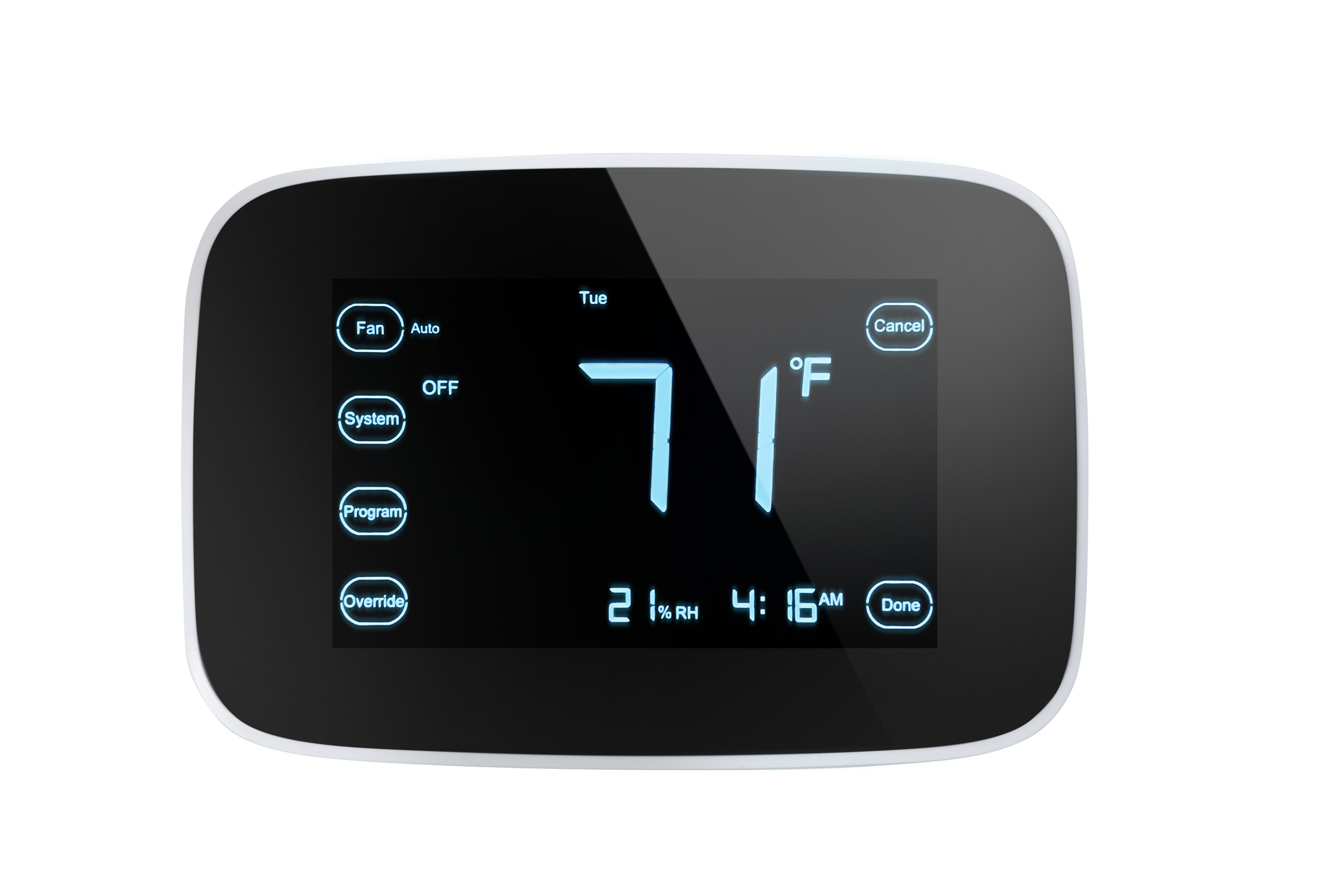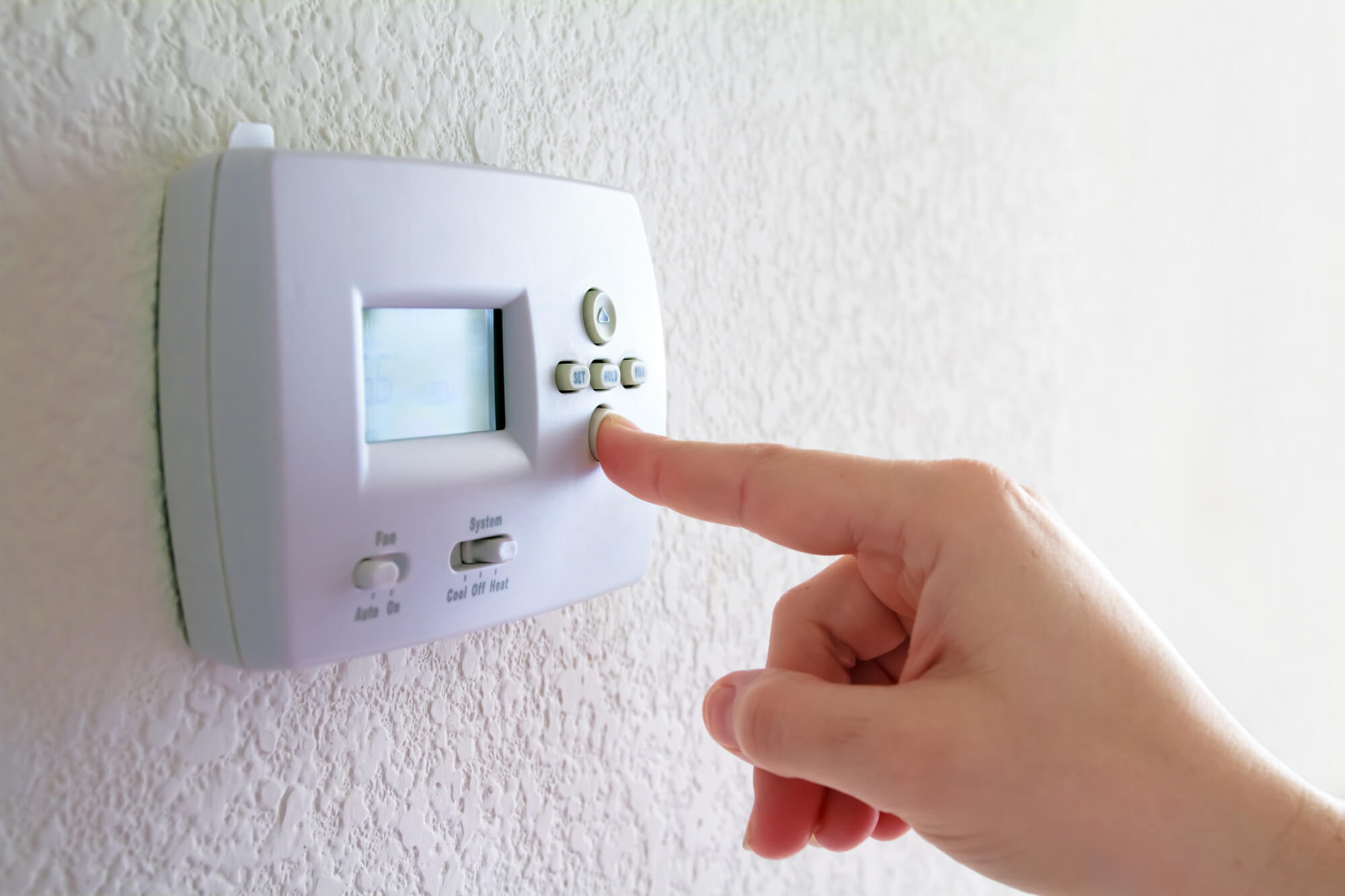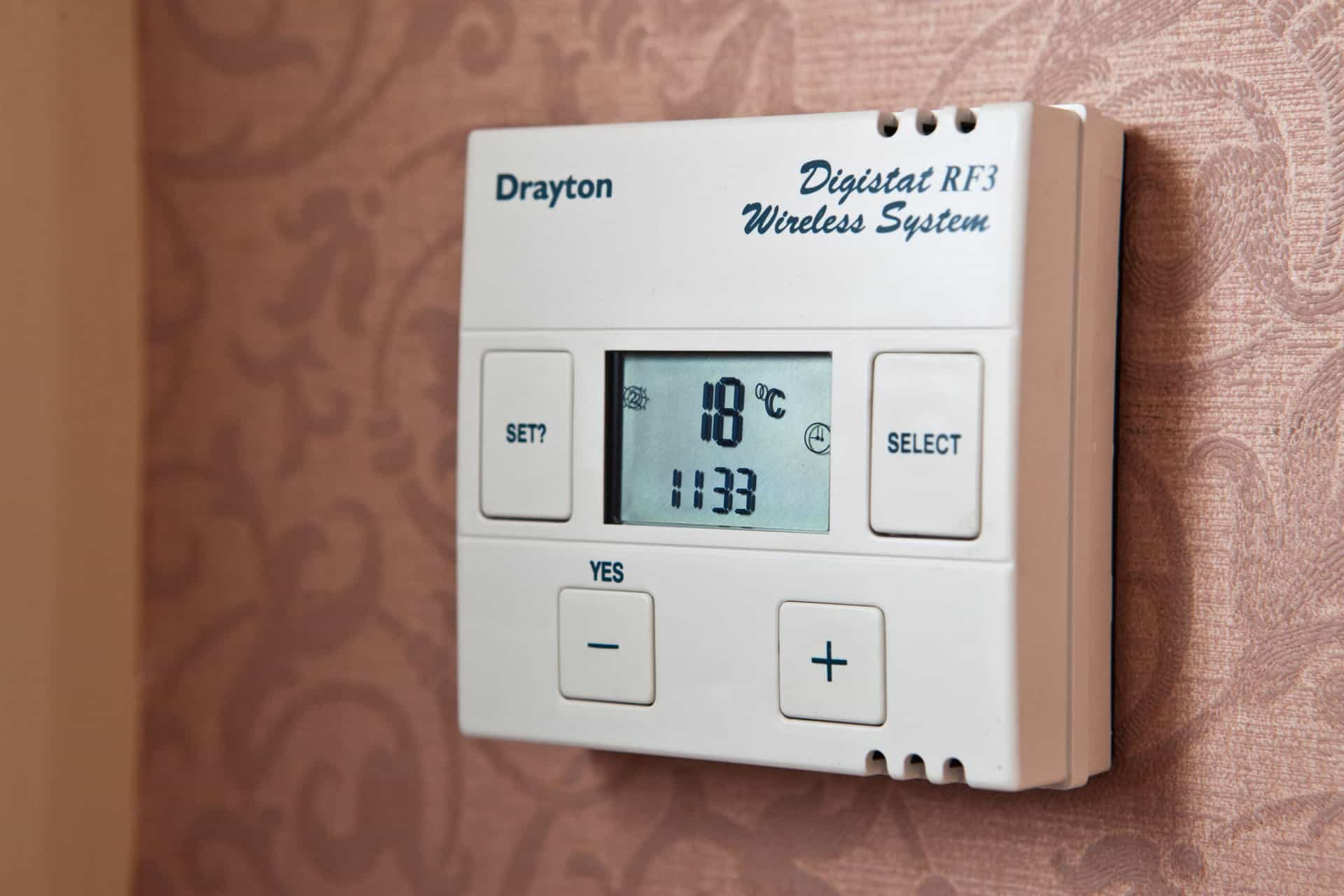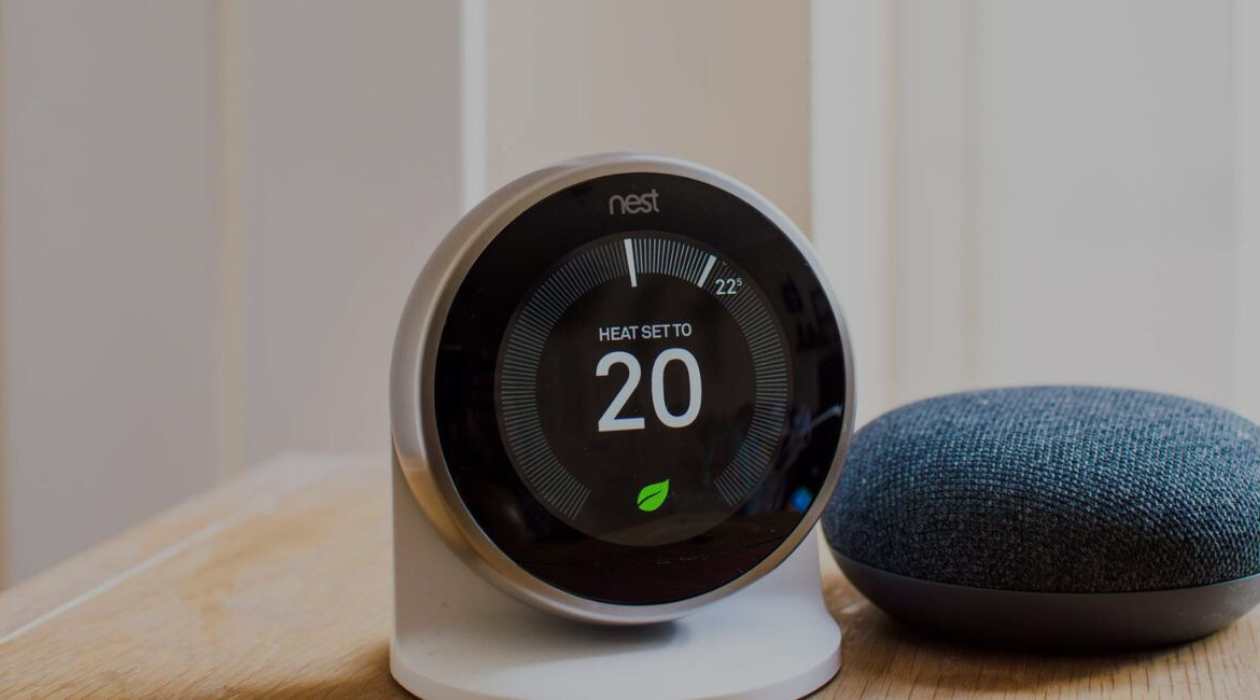Home>Home Appliances>Home Automation Appliances>How Does Wireless Thermostat Work


Home Automation Appliances
How Does Wireless Thermostat Work
Modified: February 25, 2024
Discover how wireless thermostats work and improve your home automation system with this insightful guide. Learn about the benefits of using home automation appliances.
(Many of the links in this article redirect to a specific reviewed product. Your purchase of these products through affiliate links helps to generate commission for Storables.com, at no extra cost. Learn more)
**
Introduction
**
Welcome to the future of home temperature control! Wireless thermostats are revolutionizing the way we manage our indoor climate. These innovative devices offer unparalleled convenience, energy efficiency, and flexibility, allowing homeowners to optimize their comfort while reducing energy consumption.
In this comprehensive guide, we'll delve into the inner workings of wireless thermostats, exploring their basic components, communication protocols, installation process, as well as their notable benefits and potential drawbacks. By the end of this article, you'll have a thorough understanding of how wireless thermostats function and whether they're the right choice for your home.
Let's embark on this enlightening journey to uncover the magic behind wireless thermostat technology and discover how it can elevate your home comfort experience.
**
Key Takeaways:
- Wireless thermostats offer remote access, energy efficiency, and smart integration, enhancing home comfort and convenience.
- Consider compatibility, initial cost, and learning curve when adopting wireless thermostat technology for optimal home climate control.
Read more: How Does A Wireless Printer Work
Basic Components of a Wireless Thermostat
**
Wireless thermostats consist of several essential components that work harmoniously to regulate indoor temperature and create a comfortable living environment. Understanding these components is crucial to comprehending the functionality of wireless thermostats.
1. Thermostat Control Unit:
The control unit serves as the central hub of the wireless thermostat system. It houses the interface through which users can set and adjust temperature settings. This unit typically features a digital display, control buttons, and indicators for heating, cooling, and system status.
2. Temperature Sensor:
A wireless thermostat is equipped with a temperature sensor that detects the current indoor temperature. This sensor continually monitors the ambient temperature and relays this data to the control unit, enabling the thermostat to make real-time adjustments to maintain the desired temperature.
3. Receiver Module:
The receiver module acts as the intermediary between the control unit and the heating, ventilation, and air conditioning (HVAC) system. It receives signals from the control unit and communicates with the HVAC system to initiate heating or cooling cycles based on the user's preferences.
4. Wireless Communication Interface:
Wireless thermostats utilize a communication interface, such as Wi-Fi, Zigbee, or Z-Wave, to transmit data between the control unit, temperature sensor, and receiver module. This wireless connectivity enables remote access and control of the thermostat through mobile devices or computers.
5. Power Source:
Most wireless thermostats are powered by batteries or have a built-in rechargeable battery. Some models may also have a common wire (C-wire) connection to draw power from the HVAC system, ensuring continuous operation without relying solely on batteries.
Understanding these fundamental components provides insight into the seamless operation of wireless thermostats, allowing users to make informed decisions regarding their installation and usage.
**
Communication Protocol
**
Wireless thermostats employ advanced communication protocols to facilitate seamless interaction between the control unit, temperature sensor, receiver module, and external devices. These protocols play a pivotal role in ensuring reliable data transmission and remote accessibility. Let’s explore the primary communication protocols utilized in wireless thermostat systems:
1. Wi-Fi:
Wi-Fi-enabled thermostats leverage standard wireless networking protocols to connect to home Wi-Fi networks. This connectivity enables users to remotely access and control the thermostat using dedicated mobile apps or web interfaces. Wi-Fi connectivity also facilitates integration with smart home ecosystems and voice assistant platforms, enhancing the overall user experience.
2. Zigbee:
Zigbee is a low-power, short-range wireless communication standard commonly used in home automation devices, including wireless thermostats. Zigbee-enabled thermostats can form mesh networks, allowing them to communicate with other Zigbee-compatible devices, such as smart sensors and smart home hubs. This enables comprehensive home automation and energy management capabilities.
3. Z-Wave:
Similar to Zigbee, Z-Wave is a wireless communication protocol designed for home automation applications. Z-Wave-enabled thermostats offer interoperability with a wide range of Z-Wave devices, enabling seamless integration into existing smart home ecosystems. This protocol ensures reliable communication and efficient energy management within the connected home environment.
These communication protocols empower wireless thermostats to deliver enhanced connectivity, interoperability, and remote accessibility, transforming the way users interact with their HVAC systems and manage indoor comfort. The utilization of these advanced protocols underscores the evolution of thermostat technology towards greater convenience and energy efficiency.
**
Installation Process
**
The installation of a wireless thermostat involves several key steps to ensure seamless integration with the existing HVAC system and optimal performance. While professional installation is recommended for complex systems, some homeowners with basic technical skills may opt for DIY installation. Here’s an overview of the typical installation process for a wireless thermostat:
1. Compatibility Check:
Before purchasing a wireless thermostat, it’s essential to verify its compatibility with the existing HVAC system. Factors such as system voltage, wiring configuration, and HVAC equipment type should be assessed to determine the suitability of the thermostat.
2. Power Source Consideration:
If the chosen wireless thermostat requires a power source, such as a C-wire connection, homeowners should evaluate the availability of this power supply near the thermostat location. In cases where a C-wire is not present, alternative power options, such as using a power adapter or utilizing battery-powered thermostats, should be considered.
3. Thermostat Placement:
Selecting an appropriate location for the thermostat is crucial for accurate temperature sensing and optimal performance. The chosen placement should be away from direct sunlight, drafts, and heat sources to prevent false temperature readings and ensure precise climate control.
4. Wiring Installation:
For wired thermostats, proper wiring installation is essential. This may involve labeling and connecting the designated wires from the HVAC system to the corresponding terminals on the thermostat. In the case of wireless thermostats, pairing the control unit with the receiver module is typically performed according to the manufacturer’s instructions.
5. Network Connectivity Setup:
For Wi-Fi-enabled thermostats, configuring the device to connect to the home Wi-Fi network is a critical step. This involves following the manufacturer’s instructions to input network credentials and establish a secure connection for remote access and control.
6. System Testing and Calibration:
Once the installation is complete, testing the thermostat’s functionality and calibrating temperature settings ensures accurate operation. This may involve running the heating and cooling systems to verify proper functionality and making any necessary adjustments to temperature offsets or cycle settings.
By following these installation steps with precision and attention to detail, homeowners can successfully integrate a wireless thermostat into their HVAC system, unlocking the benefits of advanced temperature control and energy management.
**
A wireless thermostat works by using radio frequency to communicate with the heating and cooling system, allowing you to control the temperature from a distance. It also can be programmed to adjust the temperature based on your schedule, saving energy and money.
Benefits of Using a Wireless Thermostat
**
Wireless thermostats offer a myriad of advantages that cater to modern homeowners seeking enhanced comfort, energy efficiency, and convenience. From seamless remote access to intelligent temperature management, these devices are designed to elevate the home climate control experience. Let’s explore the compelling benefits of using a wireless thermostat:
1. Remote Accessibility:
One of the standout features of wireless thermostats is the ability to remotely monitor and adjust temperature settings via mobile apps or web interfaces. Whether homeowners are at work, traveling, or simply relaxing at home, they can effortlessly control their HVAC systems from anywhere, ensuring optimal comfort and energy savings.
2. Energy Efficiency:
Wireless thermostats empower users to implement precise temperature schedules and energy-saving modes, optimizing HVAC operation for maximum efficiency. The ability to program heating and cooling cycles based on occupancy patterns and personal preferences helps reduce energy consumption and lower utility costs without compromising comfort.
3. Smart Integration:
Many wireless thermostats are compatible with smart home ecosystems and voice assistant platforms, allowing seamless integration with other smart devices. This interoperability enables advanced automation, voice-controlled temperature adjustments, and the creation of customized smart home scenarios for enhanced comfort and convenience.
4. Adaptive Learning:
Some wireless thermostats feature adaptive learning capabilities, utilizing advanced algorithms to analyze user behavior and environmental conditions. By learning from usage patterns, these thermostats can automatically adjust temperature settings to suit occupants’ preferences and optimize energy usage, creating a personalized and efficient climate control experience.
5. Maintenance Alerts:
Wireless thermostats can provide timely maintenance alerts and system notifications, alerting homeowners to potential HVAC issues, filter replacements, or performance irregularities. This proactive approach to system monitoring helps prevent costly repairs, prolongs equipment lifespan, and ensures consistent comfort and air quality.
6. Enhanced Comfort:
By offering precise temperature control and scheduling options, wireless thermostats contribute to a more comfortable indoor environment. Whether it’s maintaining ideal temperatures throughout the day or adjusting settings for specific activities, these devices enable personalized comfort tailored to individual preferences.
Embracing the convenience and intelligence of wireless thermostats presents homeowners with a wealth of benefits, empowering them to optimize energy usage, simplify temperature management, and enjoy a more comfortable and connected living space.
**
Read more: How Does A Smart Thermostat Work
Potential Drawbacks
**
While wireless thermostats offer numerous advantages, it’s important to consider potential drawbacks that may impact their suitability for certain home environments and user preferences. Understanding these limitations can help homeowners make informed decisions when evaluating the adoption of wireless thermostat technology. Let’s explore some potential drawbacks associated with wireless thermostats:
1. Initial Cost:
The upfront cost of purchasing and installing a wireless thermostat may be higher compared to traditional thermostats. This initial investment can pose a financial barrier for some homeowners, especially if they have budget constraints or are hesitant to allocate funds to smart home upgrades.
2. Connectivity Reliance:
Wireless thermostats rely on network connectivity, such as Wi-Fi or other wireless protocols, for remote access and control. In the event of network outages or technical issues, users may experience limitations in accessing and adjusting thermostat settings, potentially affecting comfort and convenience.
3. Compatibility Challenges:
Ensuring compatibility with the existing HVAC system is crucial for seamless integration of wireless thermostats. In some cases, older HVAC equipment may not be compatible with certain wireless thermostat models, requiring additional modifications or upgrades to facilitate installation.
4. Power Source Dependency:
Certain wireless thermostats may require a constant power source, such as a C-wire connection, to operate optimally. Homes lacking this power supply may need to explore alternative power solutions, potentially adding complexity to the installation process.
5. Learning Curve:
For users transitioning from traditional thermostats to wireless models, there may be a learning curve associated with understanding the advanced features, programming options, and remote control functionalities. This adjustment period may require some time and effort to fully harness the capabilities of the wireless thermostat.
6. Privacy and Security Concerns:
As with any connected smart device, wireless thermostats raise privacy and security considerations. Users should be mindful of data privacy, secure network configurations, and firmware updates to mitigate potential vulnerabilities and safeguard personal information.
While these potential drawbacks merit consideration, it’s important to note that advancements in wireless thermostat technology continue to address many of these concerns, offering improved compatibility, user-friendly interfaces, and robust security measures. By weighing the pros and cons, homeowners can make informed choices regarding the adoption of wireless thermostat solutions.
**
Conclusion
**
Wireless thermostats represent a remarkable evolution in home climate control, offering a host of benefits that cater to the modern homeowner’s desire for comfort, energy efficiency, and convenience. From their advanced communication protocols to their adaptive learning capabilities, wireless thermostats have redefined the way we interact with and manage indoor temperature settings.
As technology continues to advance, the seamless integration of wireless thermostats into smart home ecosystems and the proliferation of voice-controlled features underscore the transformative impact of these devices on the residential environment. The ability to remotely monitor and adjust temperature settings, coupled with intelligent energy management, empowers homeowners to achieve personalized comfort while reducing energy consumption and utility costs.
While wireless thermostats may present initial cost considerations and compatibility challenges, their long-term benefits, including enhanced comfort, proactive maintenance alerts, and smart integration, position them as invaluable assets for modern households seeking to optimize their living spaces.
As homeowners navigate the landscape of smart home technology, wireless thermostats stand out as a cornerstone of intelligent climate control, offering a pathway to a more connected, efficient, and comfortable living experience. By embracing these innovative devices and understanding their potential drawbacks, homeowners can make informed decisions that align with their lifestyle, budget, and sustainability goals.
In conclusion, wireless thermostats exemplify the convergence of cutting-edge technology and everyday comfort, empowering homeowners to take control of their indoor climate with unprecedented ease and intelligence.
Frequently Asked Questions about How Does Wireless Thermostat Work
Was this page helpful?
At Storables.com, we guarantee accurate and reliable information. Our content, validated by Expert Board Contributors, is crafted following stringent Editorial Policies. We're committed to providing you with well-researched, expert-backed insights for all your informational needs.















0 thoughts on “How Does Wireless Thermostat Work”